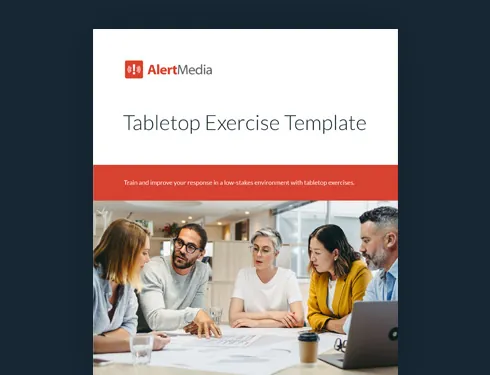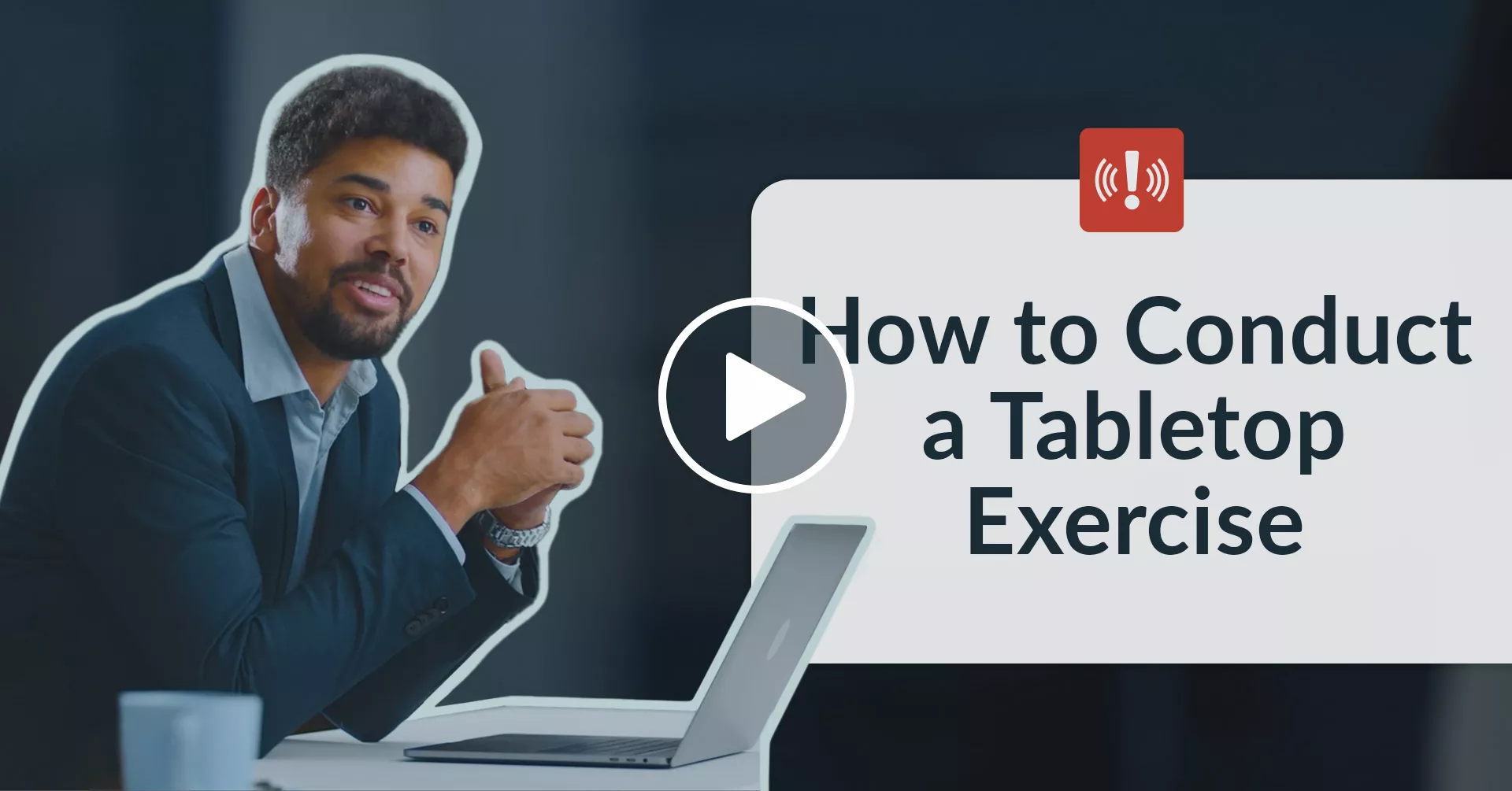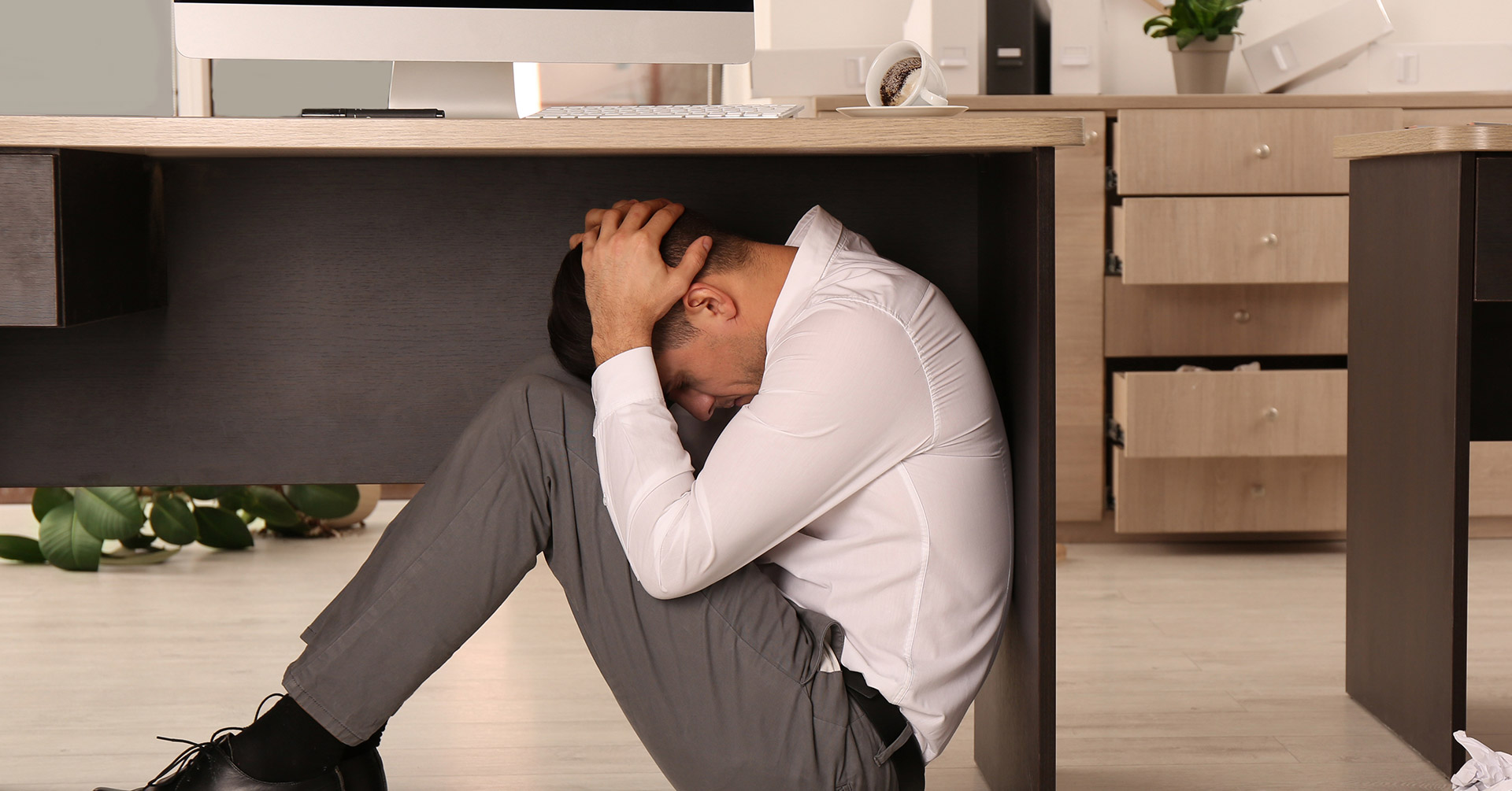
5-Step Earthquake Tabletop Exercise Guide
Don’t wait until the ground starts to shake to prepare for an earthquake. Learn how to create and run an earthquake tabletop exercise so your emergency response doesn’t crumble when it matters most.

It happens in just seconds. One moment, everything is normal, and the next, the ground is shaking and rolling and the buildings around you are rocked with potentially deadly quakes. Earthquakes are one of the most unpredictable disasters, and they happen all over the globe, particularly in areas around the edges of tectonic plates and areas with lots of underground mining.
Because of the lack of warning, preparing for earthquakes can be complicated. And it’s made even more complicated because earthquakes often trigger other disaster situations, such as fires, infrastructure failure, and even large-scale disasters such as the Fukushima Daiichi nuclear power plant accident in 2011.
“The thing people need to understand is that a crisis is never just one crisis,” explains Dr. Steve Goldman, Director of Advanced Business Resiliency at the Massachusetts Institute of Technology (MIT) on a recent episode of The Employee Safety Podcast. “If you have an IT situation, that goes into communications, HR, operations, finance. If you have an oil spill, it’s not just oil in the ocean; it’s all the ramifications for all the people making their living, dealing with politicians, dealing with getting with recovery teams to the oil spill. A crisis is never just one crisis.” This is especially true of earthquakes.
Get the Tabletop Exercise Template
But the right preparation and training can make all the difference, Dr. Goldman told us. “This is why you drill down and you drill wide to make sure it’s all covered.” With unpredictable emergencies like earthquakes, one of the best ways to drill your response and prepare your team to act quickly to stay safe through the initial quake and any concurrent disasters that follow is to run a tabletop exercise. In this article, we will walk you through how to create and run an earthquake tabletop exercise so you and your team can be ready the second the critical event hits.
What is a tabletop exercise?
A tabletop exercise is a training activity that allows your team to evaluate and practice their response to a potential emergency in a simulated, controlled environment. These exercises are discussion-based and usually conducted in a meeting room or around a conference table, where participants gather to discuss and analyze a hypothetical scenario and run through the emergency response plan rather than physically drilling it.
Why Run Tabletop Exercises for Earthquake Preparedness?
Running a full-scale earthquake drill is an incredibly useful strategy for disaster preparedness. But these drills can be expensive and time-consuming, especially if you have not already trained your response. A tabletop exercise offers a low-stakes opportunity to create a sort of muscle memory for your response. These exercises work great when leading up to full-scale drills and practice runs. Since earthquakes can set off disastrous chain reactions, having dedicated training to go through all the different crisis situations will help everyone on your emergency response team and beyond become familiar with what they should be doing, no matter what complications arise. Then, the drill proves they can actually perform their roles.
Dr. Goldman recommends a regular cadence of practice for those who train with his team at MIT. “I would recommend once-a-quarter skill drills and at least one—ideally, two full-scale exercises a year with training leading up to them… to sharpen all those skills.” Repeated training ensures your team’s skills don’t fall by the wayside after too long without practice. That’s where tabletop exercises come in; they can help you repeat your training without disrupting your day-to-day work. Creating a robust tabletop exercise ensures you get the most out of any other drills you perform. Here’s how you get started.
How to Create and Run an Earthquake Tabletop Exercise
Creating a tabletop exercise for earthquake disasters is relatively straightforward in just five steps. And it can be made even simpler by using an earthquake tabletop exercise template. Follow these five steps, and download this free tabletop exercise template to get started.
1. Gather your tabletop team
The first step is to assemble the team that will be performing the tabletop exercise by identifying key stakeholders and participants from various departments. You’ll want to consider including people who are involved with emergency response roles such as emergency management, incident command system (ICS), communication, logistics, HR, facilities, and other relevant areas. This ensures you have an organization-wide response prepared. Here are the roles you will need to fill on your team:
Earthquake tabletop exercise roles and responsibilities
Facilitator — This person will act like a moderator or director. The facilitator won’t directly participate in the exercise but will kick things off and lead everyone through the scenario. They may also redirect the conversation if things get off-topic.
Participants — These people will be the ones actually navigating the exercise and “performing” their roles. Participants should feel empowered to speak up and ask questions, as well as follow the proposed plan. They will draw on their experience to suggest changes or improvements during the exercise, and their reflections will be factored into the improvement plan. Participants should represent a cross-section of your company, with people from all different departments and job functions.
Evaluator — Like the facilitator, this person is not going to participate in the exercise itself. Instead, the evaluator aims to observe the exercise and suggest improvements. They will quietly watch the proceedings and take notes on what went well, what went poorly, and what could be changed to create a better response the next time. Depending on the size of your exercise, you may include multiple evaluators.
Observers — The last group is made up of observers. These people are often experts or stakeholders and do not participate in the exercise, but they can contribute to the conversation and answer questions.
Once you have your group gathered, you can design the scenario itself.
2. Design the earthquake scenario and objectives
When designing your earthquake scenario—or any other tabletop exercise scenario—you want it to feel as realistic as possible. This means you should include key details about the hypothetical event as well as specifics of your organization. This scenario should simulate the event occurring at your place of business rather than just a generic earthquake. Here is an example scenario you can use and personalize for your business:
At 3 pm on a workday, with hundreds of employees on site, a magnitude 6.2 earthquake occurs near your worksite. The shaking lasts for less than a minute. Your building incurs slight structural damage, and roads leading to and from your building have been damaged.
Once you have the scenario, you want to set objectives for what participants will work toward with the exercise. Are you practicing how you will communicate about the earthquake? Are you practicing the immediate emergency response of drop, cover, hold on? Are you focusing on risk mitigation efforts? Are you organizing your business continuity or emergency operations plans? Are you working on disaster recovery and getting your business back up and running? Decide ahead of time what will be the specific focus so you use your time wisely.
Drop, cover, and hold on
If you are indoors during an earthquake, here’s what you can do to stay safe. Drop to the ground, take cover under a sturdy piece of furniture (such as a table or desk), and hold on until the shaking stops. Be sure to avoid windows, tall furniture that could topple over (like bookshelves), and any other objects that may fall.
3. Create injects to practice with complications
While, ideally, the earthquake stops with a single quake and minimal damage, most emergency situations are not so straightforward. That’s why any preparations and practice responses should account for complications. With tabletop exercises, this takes the form of injects that the facilitator will add during the exercise to mix things up and see how the response changes in real time. Here are a few injects to consider for an earthquake tabletop exercise:
- Multiple aftershocks
- Building damage
- Power outages
- Delays with first responders
- Damage at local healthcare facilities
- Blocked or destroyed roadways
- Tsunami following an earthquake
- Collapse of overpasses
- Supply chain impacts
4. Run the exercise
Next, it’s time to execute the tabletop exercise. Your facilitator will guide participants through the scenario, introduce any injects, and moderate discussions. You’ll want to encourage active engagement, collaboration, and problem-solving through every step, and the evaluators should take notes to use in the final phase of the exercise. Keep your exercise objectives in mind throughout the whole process so you stay focused and get the most out of your time.
5. Reflect and set an improvement plan
The final step is to have a discussion and debrief about the exercise to reflect on how it went. Your evaluators can go through their notes, and everyone should weigh in. During your reflection, you will also want to document your findings and any changes to improve the procedures you practiced. You can use an informal hot wash or a more official after-action review to ensure any steps for improvement or participant feedback is noted. An after-action report also provides a clear framework for follow-up, so you can be sure your next steps are laid out to actually make the necessary changes to your emergency preparedness or response plans for earthquakes.
Creating a Solid Foundation for Earthquake Preparedness
Preparing for the unpredictable might seem like an overwhelming task. But with a tabletop exercise to familiarize yourself and your team with the best response procedures, you can feel safe knowing you’re as ready as possible. When the next earthquake shakes your business, you’ll be prepared to keep your people safe and your business operational. And you can download this free tabletop exercise template to simplify the process.




![11 Steps to Creating an Effective Emergency Response Plan [+ Template]](https://www.alertmedia.com/wp-content/uploads/2023/10/Blog-Emergency-Response-Plan.webp)
